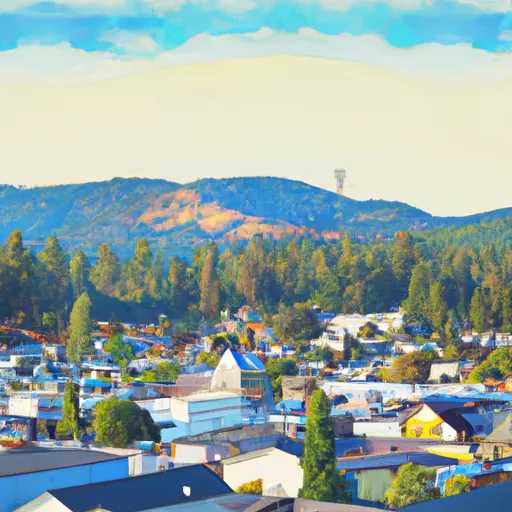-
 Snoflo Premium
Snoflo Premium
Get unlimited access to all our content
With no Ad interruptions! - Start Your Free Trial Login with existing account
Soda-Springs
Eden Index
Climate
6.6
•
Recreation
9.3
•
Community
1.8
•
Safeguard
6.4/10

Soda Springs is a small unincorporated community located in Nevada County, California. Situated in the Sierra Nevada mountain range, it offers a picturesque setting with a unique climate and abundant outdoor recreation opportunities.
The climate in Soda Springs is classified as a Mediterranean climate, characterized by hot, dry summers and cool, wet winters. Summers are typically mild with average temperatures ranging from the 70s to low 80s Fahrenheit, while winter temperatures can drop below freezing, providing a great environment for winter sports enthusiasts.
Hydrology constituents in Soda Springs include numerous creeks and rivers, such as the South Yuba River and the nearby Lake Van Norden. These water bodies offer opportunities for fishing, boating, and swimming during the summer months.
Outdoor recreation opportunities abound in Soda Springs. The area is renowned for its ski resorts, including Sugar Bowl Resort and Boreal Mountain Resort, attracting winter sports enthusiasts from all over. During the warmer months, visitors can enjoy hiking, mountain biking, and camping in the nearby Tahoe National Forest, which offers stunning views and a variety of trails for all levels of outdoor enthusiasts.
In summary, Soda Springs, California, offers a Mediterranean climate, diverse hydrology constituents, and year-round outdoor recreation opportunities, making it an ideal destination for both winter and summer activities.
What is the Eden Index?
The Snoflo Eden Index serves as a comprehensive rating system for regions, evaluating their desirability through a holistic assessment of climate health, outdoor recreation opportunities, and natural disaster risk, acknowledging the profound impact of these factors on livability and well-being.
Climate Health Indicator (CHI): 6.6
Soda-Springs receives approximately
1763mm of rain per year,
with humidity levels near 63%
and air temperatures averaging around
6°C.
Soda-Springs has a plant hardyness factor of
7, meaning
plants and agriculture in this region tend to thrive during the non-winter months.
By considering the ideal temperature range, reliable water supplies, clean air, and stable seasonal rain or snowpacks, the Climate Health Indicator (CHI) underscores the significance of a healthy climate as the foundation for quality living.
A healthy climate is paramount for ensuring a high quality of life and livability in a region, fostering both physical well-being and environmental harmony. This can be characterized by ideal temperatures, reliable access to water supplies, clean air, and consistent seasonal rain or snowpacks.
Weather Forecast
Streamflow Conditions
Lower Sacramento
Area Rivers
Lower Sacramento
Snowpack Depths
Lower Sacramento
Reservoir Storage Capacity
Lower Sacramento
Groundwater Levels
Recreational Opportunity Index (ROI): 9.3
The Recreational Opportunity Index (ROI) recognizes the value of outdoor recreational options, such as parks, hiking trails, camping sites, and fishing spots, while acknowledging that climate plays a pivotal role in ensuring the comfort and consistency of these experiences.
Access to outdoor recreational opportunities, encompassing activities such as parks, hiking, camping, and fishing, is crucial for overall well-being, and the climate plays a pivotal role in enabling and enhancing these experiences, ensuring that individuals can engage in nature-based activities comfortably and consistently.
Camping Areas
| Campground | Campsites | Reservations | Toilets | Showers | Elevation |
|---|---|---|---|---|---|
| Pleasant Dispersed | 10 | 6,413 ft | |||
| Wench Creek | 2 | 4,947 ft | |||
| Gerle Creek | 50 | 5,272 ft | |||
| Airport Flat | 16 | 5,383 ft | |||
| Ponderosa Cove | 18 | 4,293 ft | |||
| Robinson Flat | 14 | 6,696 ft | |||
| Northshore | 15 | 6,411 ft | |||
| Stumpy Meadows | 40 | 4,465 ft | |||
| Hell Hole | 10 | 5,167 ft | |||
| Wentworth Springs | 8 | 6,153 ft |
Nearby Ski Areas
Catastrophe Safeguard Index (CSI):
The Catastrophe Safeguard Index (CSI) recognizes that natural disaster risk, encompassing floods, fires, hurricanes, and tornadoes, can drastically affect safety and the overall appeal of an area.
The level of natural disaster risk in a region significantly affects safety and the overall livability, with climate change amplifying these risks by potentially increasing the frequency and intensity of events like floods, fires, hurricanes, and tornadoes, thereby posing substantial challenges to community resilience and well-being.
Community Resilience Indicator (CRI): 1.8
The Community Resilience Indicator (CRI) recognizes that education, healthcare, and socioeconomics are crucial to the well-being of a region. The CRI acknowledges the profound impact of these elements on residents' overall quality of life. By evaluating educational resources, healthcare accessibility, and economic inclusivity, the index captures the essential aspects that contribute to a thriving community, fostering resident satisfaction, equity, and social cohesion.

